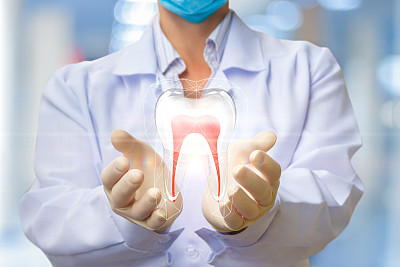Essential Guidelines to Follow After Getting a Dental Filling for Optimal Recovery and Longevity
Summary: After receiving a dental filling, it is essential to follow certain guidelines to ensure a smooth recovery and prolong the life of the filling. This article provides an overview of the most important steps to take post-treatment, including what to expect immediately after the procedure, how to manage discomfort, dietary recommendations, and the importance of maintaining oral hygiene. Understanding these crucial aspects will not only help patients recover optimally but also ensure the long-term success of their dental fillings.
1. Immediate Post-Treatment Expectations

After obtaining a dental filling, it is common to experience some numbness from the local anesthesia used during the procedure. This numbness can last for a few hours, and it is advisable to avoid chewing or biting down on anything until it wears off. Doing so can prevent accidental injuries to your tongue or cheeks, which may cause further discomfort.
During the first few hours following the filling, patients may also experience mild sensitivity or discomfort, both at the site of the filling and surrounding teeth. This is typically due to the anesthesia wearing off and the body adjusting to the new filling material. If pain persists or worsens, it is critical to contact your dentist for further evaluation.
Furthermore, be aware that the newly filled tooth might feel different when you bite down compared to your other teeth. If the filling feels high or leads to discomfort when biting, it is essential to schedule a follow-up appointment for your dentist to adjust it accordingly.
2. Managing Discomfort Effectively
In the aftermath of a dental filling, addressing discomfort is key to a smooth recovery. Over-the-counter pain relievers like acetaminophen or ibuprofen can be utilized to manage mild to moderate discomfort. Always follow the recommended dosages on the packaging and consult with your dentist if you have any pre-existing conditions or are taking other medications.
If the filling leads to heightened sensitivity, particularly to hot or cold foods and drinks, consider avoiding extreme temperatures temporarily. Instead, choose room temperature foods and beverages to minimize discomfort during this sensitive period.
Applying a warm compress on the outside of your cheek may also provide relief if you experience swelling or discomfort in the localized area. This method helps soothe the inflammation without the risk of side effects associated with medication. Should the swelling or pain not subside after a couple of days, reach out to your dentist for advice and possible intervention.
3. Dietary Recommendations for Recovery
What you eat after receiving a dental filling plays a significant role in your recovery. For the first 24 hours, it is wise to stick to soft foods. Foods such as yogurt, mashed potatoes, or smoothies can help ensure you are meeting your nutritional needs without risking complications with your new filling.
Avoid sticky or hard foods during the initial recovery period, as they can damage the filling or dislodge it. Foods like nuts, popcorn, or chewy candies can be problematic and should be avoided, especially within the first few days post-treatment.
Additionally, steering clear of extremely sugary or acidic foods is also a good idea. These types of foods can increase the risk of bacteria growth and tooth decay around the filling, which could jeopardize its longevity and compromise your oral health. Maintaining a balanced diet rich in fruits and vegetables can support overall healing.
4. Importance of Good Oral Hygiene
Maintaining good oral hygiene is crucial after getting a dental filling. It is necessary to continue brushing your teeth at least twice a day and flossing daily, taking extra care around the filled tooth. This vigilance helps prevent plaque buildup, which can lead to decay or gum disease around the filling.
When brushing, use a soft-bristled toothbrush and a fluoride toothpaste. Gently brush along the gumline and the area around the filling. Being attentive to this routine will keep your mouth clean and can extend the life of the filling.
Regular dental check-ups are also crucial to monitor the condition of your fillings and general oral health. Dentists will examine not only the filled tooth but all teeth for any sign of decay or damage. Scheduling biannual visits promotes prevention and early treatment of potential issues.
Summary:
In summary, following essential guidelines after receiving a dental filling is vital for optimal recovery and longevity. By understanding immediate post-treatment care, effectively managing discomfort, adhering to dietary recommendations, and following good oral hygiene practices, patients can ensure both a smooth recovery and lasting success of their dental fillings.
This article is compiled by Vickong Dental and the content is for reference only.


